In analyzing equine weight, the horse body condition score plays a fundamental role. This article will explore the equine body condition score chart to help you understand how to assess your horse’s body score. For each score, you’ll discover recommended actions to bring your horse back to a healthy state. Ultimately, based on your horse’s body condition, I’ve included indications of the type of work they can do to improve or maintain their score.
The horse body condition score scale
The horse body condition score is widely recognized and used in the equine industry. It’s a valuable and accessible tool for horse owners, caretakers, veterinarians, and equine professionals to assess and monitor the overall condition and nutritional status of a horse.
You will find two different versions of the horse body condition score scale online: the 5-point and the 9-point scales. In this article, I will refer to the 9-point scale, which, in my opinion, provides a more detailed understanding of a horse’s body condition score.
The simplicity of the scale makes it easy for a broad equestrian audience to understand and apply.
Here are the horse body condition scores from 1 to 9:
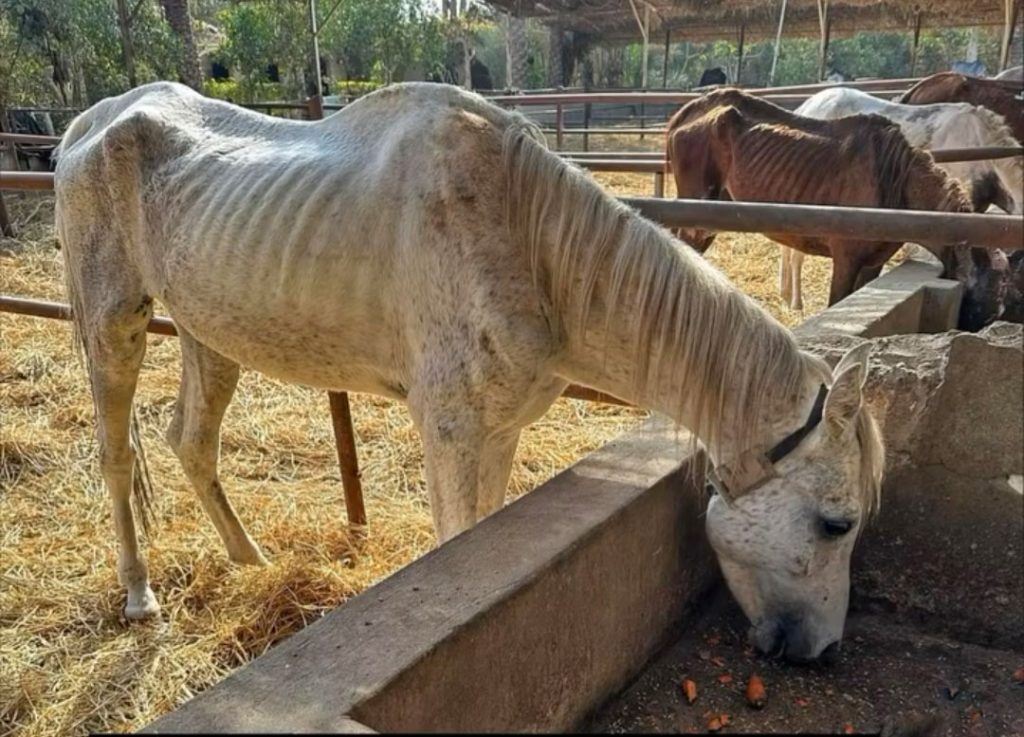
Extremely Emaciated – Score 1
The horse in question exhibits a body condition score of 1, indicating a state of extreme emaciation. Its skeletal structure is prominently visible, lacking any discernible fat cover. These clear indications point to a condition of severe malnutrition and significant weight loss.
What to do for a horse body condition score of 1
Immediately consult with a veterinarian to address any underlying health issues. Develop with an expert equine nutritionist a comprehensive rehabilitation plan, which includes a specialized feeding program aimed at gradually restoring weight and muscle.
Working activities for a horse with body condition score of 1
A horse with a body condition score of 1 is not suitable for any work or training.
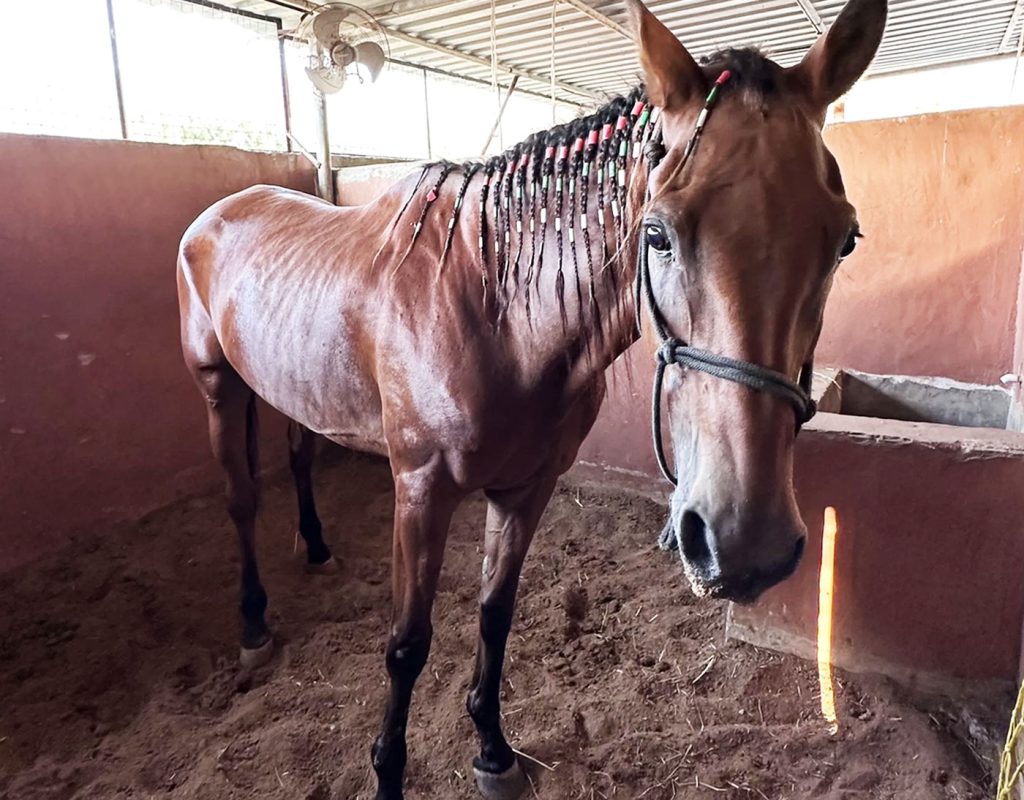
Very Thin, score 2-3
With a body condition score of 2-3, the horse displays noticeable signs of being very thin. Its backbone, ribs, and hip bones are pronounced, lacking substantial fat cover. Additionally, there is evident muscle wasting, indicating a need for intervention to improve the horse’s overall condition.
In this article, I also list a couple of reasons why your horse might be underweight. Please keep in mind that while I am striving to offer the most objective information on the topic, only an expert veterinarian or an equine nutritionist can ultimately determine the root cause of a poor equine body condition score.
Improving a horse body condition score of 2-3
For horses classified as “Very Thin” with a body condition score of 2-3, it is recommended to increase the daily caloric intake by providing high-quality forage and a balanced concentrate feed. You might want to gradually introduce alfalfa chaff or pellets to the horse’s diet to provide an extra source of proteins.
Training a horse with body condition score of 2-3
Implementing a gradual exercise program is advised to rebuild muscle strength.
You can engage the horse in light work such as groundwork (riding is not an option for such a skinny horse!). Include regular veterinary check-ups to monitor progress.
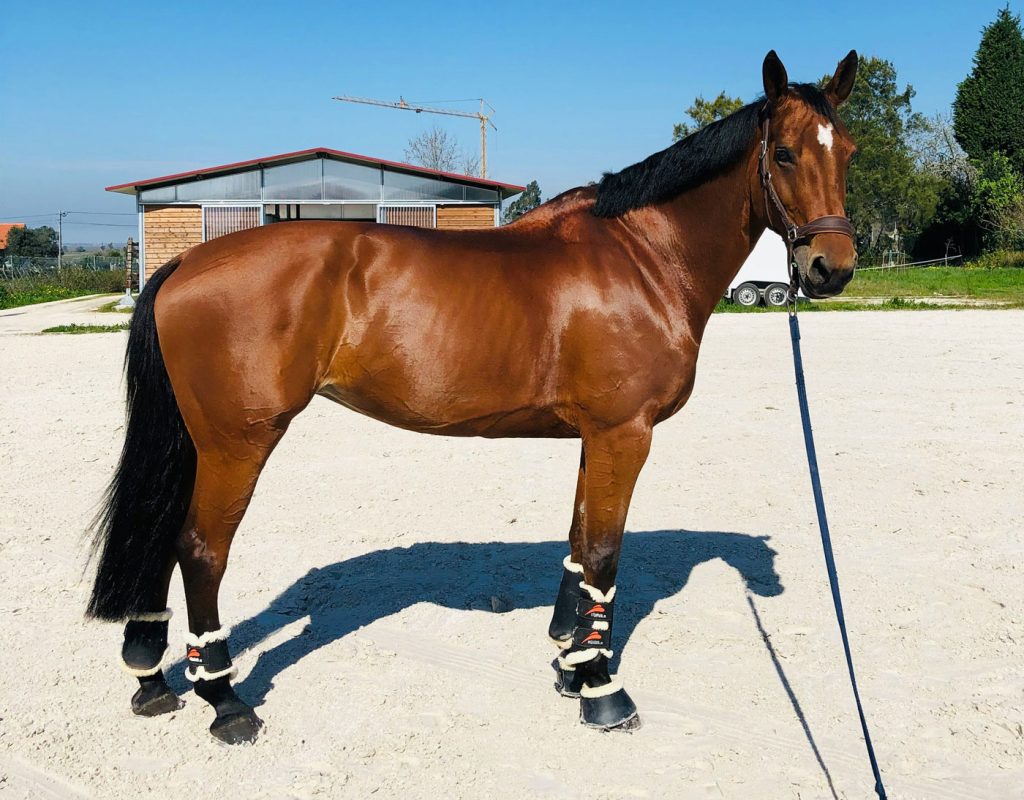
Thin, score 4-5
Evidencing a body condition score of 4-5, the horse appears thin with ribs that are easily visible though less pronounced. While the backbone may be visible, it is not as prominent. The horse exhibits some fat cover over the hips and tailhead, indicating a moderate level of equine body condition.
Action plan for a horse body condition score of 4-5
In the case of horses categorized as “Thin” with a body condition score of 4-5, it is suggested to adjust the diet to include a higher calorie content through increased forage and energy-rich feeds. Consideration should be given to supplementing the diet with fat sources, such as vegetable oil, to provide additional energy.
Working a horse with body condition score of 4-5
Undertake moderate work with your horse, involving regular riding, light draft work, or participation in low-intensity sports. Introduce a conditioning program to gradually build muscle strength. Introduce hill work to engage different muscle groups and enhance cardiovascular fitness.
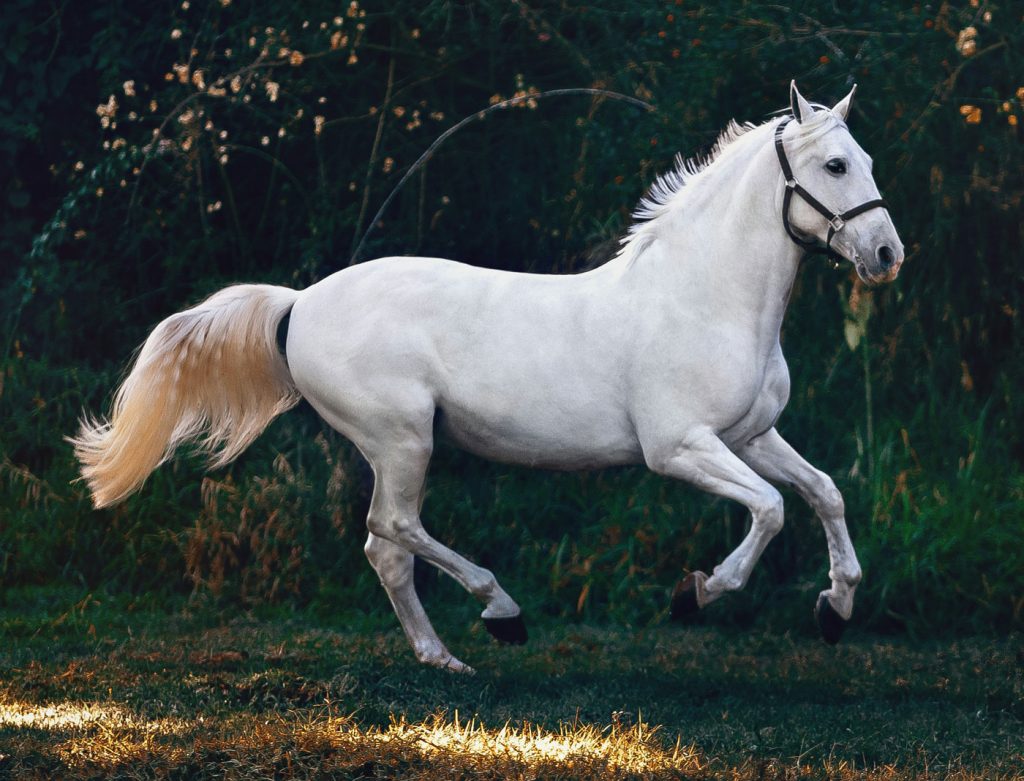
Moderate, Score 6-7
With a body condition score of 6-7, the horse is classified as having a moderate condition. While the ribs are not visible, they can be felt upon touch. The backbone is covered with fat, and there is a moderate fat cover over the hips and tailhead. The horse presents a more rounded appearance overall, indicating a healthy level of body condition.
Maintaining a horse body condition score of 6-7
For horses in the “Moderate” category with a body condition score of 6-7, maintaining a balanced diet that includes a mix of forage and concentrate feeds is recommended to support overall health. It is important to monitor the horse’s weight and adjust the diet accordingly to prevent excessive weight gain or loss.
Training a horse with body condition score of 6-7
Engage the horse in versatile work, including activities like moderate riding, ranch work, or participation in moderate-level competitions. Ensure a balanced diet with suitable energy sources to support its overall health. Regularly monitor your horse’s weight and make necessary adjustments to the diet to prevent significant weight loss.
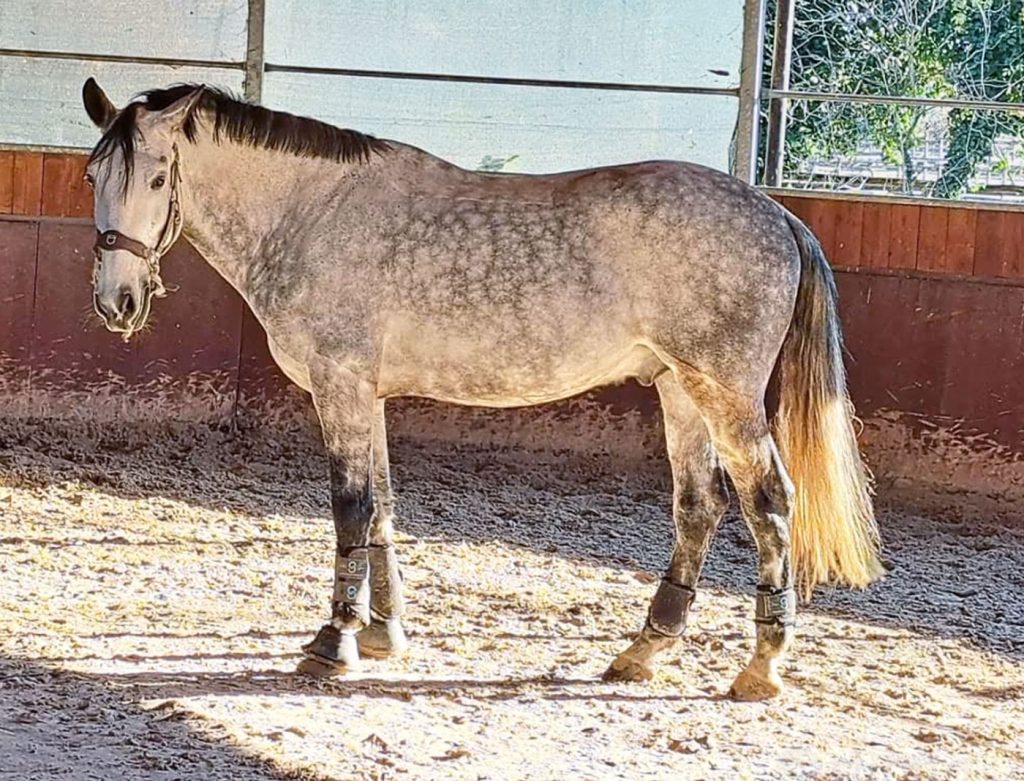
Moderately Fleshy – Score 8
At a body condition score of 8, the horse is characterized by ribs and backbone that are difficult to feel, indicating a moderately fleshy condition. There is a noticeable fat cover over the entire body, contributing to a fuller and rounder appearance.
Help a horse body condition of 8 in losing weight
Horses classified as “Moderately Fleshy” with a body condition score of 8 should gradually reduce calorie intake by adjusting the forage-to-concentrate ratio.
Training plan for a horse body condition score 8
The primary goal is to engage in exercises that promote weight loss and improve overall fitness without putting excessive strain on the horse’s joints. Incorporate aerobic exercises such as extended trotting or cantering to encourage calorie burning and cardiovascular fitness.
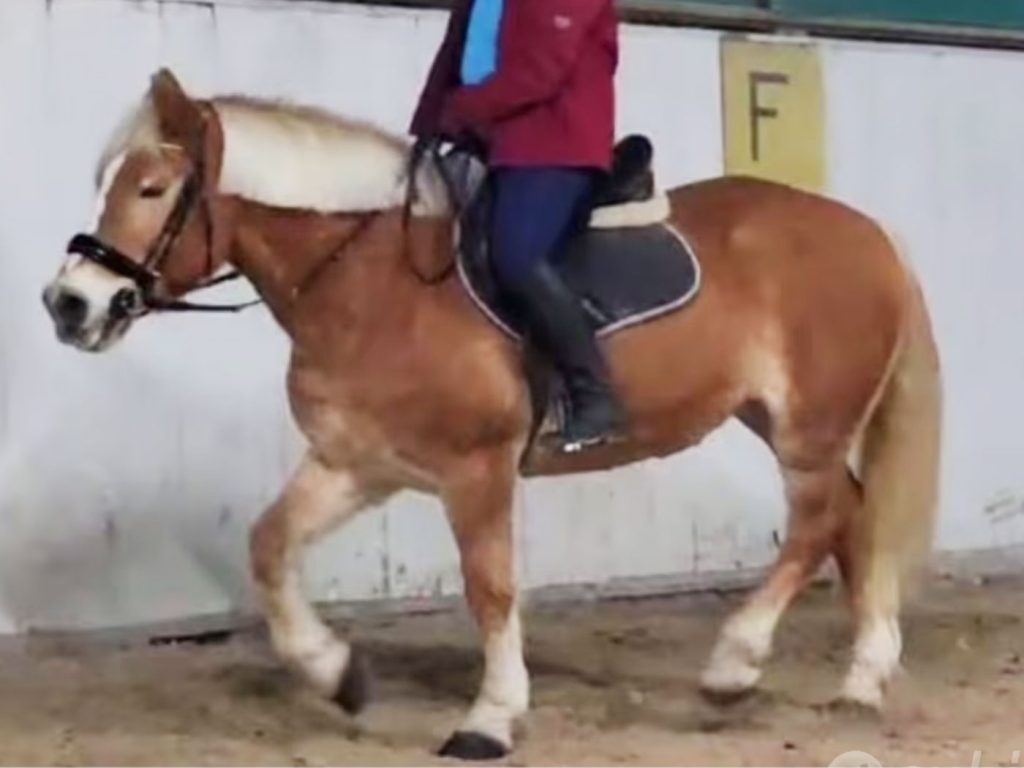
Fleshy – Score 9
With a body condition score of 9, the horse is in a fleshy condition where the ribs and backbone are almost impossible to feel. There is an excessive fat cover over the entire body, resulting in a very round and bulging appearance. This level of obesity poses an increased risk of health issues.
The diet of a horse body condition score 9
For horses categorized as “Fleshy” with a body condition score of 9, addressing their weight concerns requires a strategic approach to both diet and exercise. Implement a controlled diet with reduced calorie intake. This may involve feeding smaller portions or adjusting the type of feed to reduce overall energy content. Reduce or eliminate grain and concentrate feeds, as these can contribute significantly to calorie intake. Choose feeds with lower energy content or consider alternatives such as forage-based pellets.
Working plan of a horse body condition 9
With a horse body score 9, you will have to establish a consistent exercise routine, ensuring that the horse engages in physical activity regularly. Gradually increase the duration and intensity of exercise sessions. You can incorporate a mix of aerobic exercises and activities that engage various muscle groups. Focus on cardiovascular workouts such as extended trotting or cantering to promote calorie burning and improve overall fitness. Consider working with a knowledgeable trainer or equine fitness professional to design a customized exercise plan tailored to the specific needs and abilities of the horse.
What is a good body score for a horse?
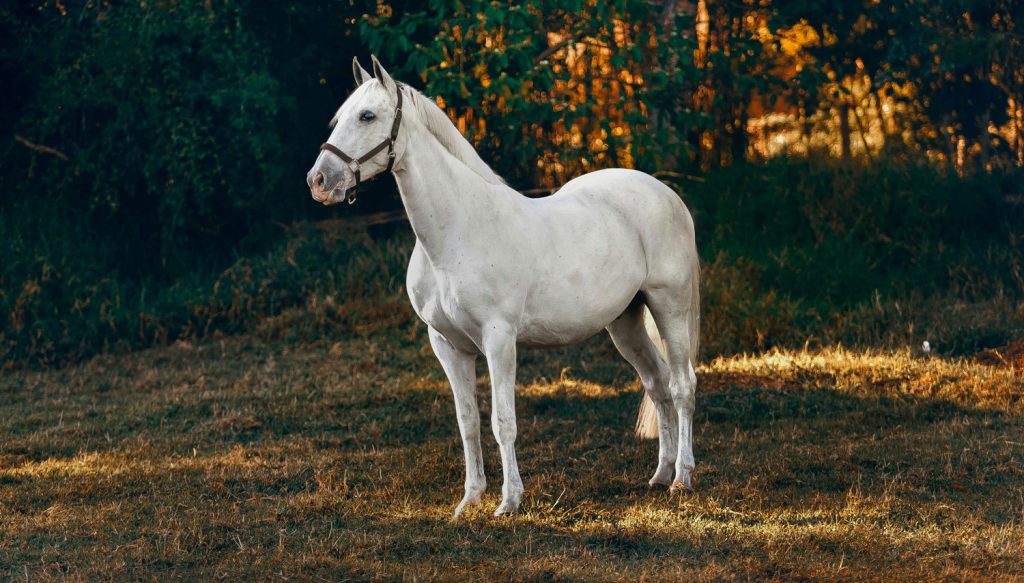
A good body condition score for a horse typically falls within the range of 4 to 6 on a 9-point scale.
With a score of 5, the horse is considered to be in a “Moderate” condition, with a healthy balance of muscle and fat. The ribs can be felt but are not prominently visible, and there is an overall rounded appearance.
Also the score 6 is in the “Moderate” category, where the ribs are not visible but can be felt easily. The back is level, and there is a healthy fat cover over the horse’s body.
A horse with a body condition score in this range is generally considered to be in good health, with adequate energy reserves and muscle tone. However, it’s important to note that the ideal body condition score can vary based on factors such as the horse’s age, breed, and specific use or activity level.
To give you some examples, the average score of an endurance horse is around 4 or 5, while a reining horse’s score is probably around 6 or 7 in some cases.
How to body score your horse
Body scoring your horse involves visually and tactilely assessing its overall body condition, evaluating the amount of fat and muscle covering various areas of the body. Here’s a step-by-step guide on how to body score your horse using the common 9-point scale:
- Familiarize yourself with the 9-point body condition scoring scale, where 1 indicates emaciation, 9 represents obesity, and 5 is considered ideal.
- Start by evaluating your horse’s neck. In a horse with an ideal body condition, the neck should blend smoothly into the body without pronounced creases.
- Assess the withers (the highest part of the back, near the base of the neck). In a horse with a good body condition, the withers should be rounded and not prominent.
- Gently run your hands along the horse’s ribcage. Ideally, you should be able to feel the ribs without them being overly prominent. If the ribs are easily visible, the horse may be underweight.
- Observe and feel the horse’s back. It should be straight and level, without a noticeable ridge along the spine.
- Inspect the hindquarters. In a horse with an ideal body condition, there should be a rounded, muscular appearance. If the hip bones are prominent, the horse may be underweight.
- Feel the area around the tailhead. In a horse with a good body condition, there should be a moderate fat cover over this area.
- Step back and assess the horse’s overall appearance. An ideal body condition presents a well-rounded and healthy-looking horse.
Remember, body scoring is a subjective evaluation, and it’s beneficial to seek input from a veterinarian or equine professional, especially if you are unsure about the horse’s condition or if you need assistance in developing an appropriate care plan.


